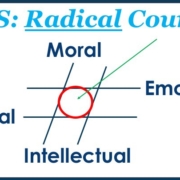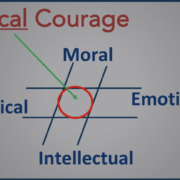3 Ways to Tell if Your Culture is Killing your Organization
3 Ways to Tell if Your Culture is Killing Your Organization
- Is your annual turnover higher than 20 percent? Hiring a new employee could cost as much as 50% to 200% of their annual salary.
- Do you have toxic leaders or employees? Workplace incivility costs an estimated $14,000 per affected employee.
- Is your workplace culture out of step with your strategy? If so, your team is underperforming. This is part of the reason most strategies are never executed.

Culture eats talent for breakfast
“Culture,” the late management guru Peter Drucker famously said, “eats strategy for breakfast.” I like to see them as two essential courses, along with leadership, of a 3-course meal. Two out of three is not good enough. A poor culture will undermine a good strategy and drive out good leaders. Poor leadership will damage a solid culture and strategy. A bad strategy will impede the growth of a well-led team.
Culture eats talent for breakfast … and spits out anything it does not like. Talent that matches culture becomes part of the organization. Talent that does not fit gets rejected.
Here’s the trick: your workplace culture is not the same as your workplace values. The culture is defined by what actually occurs at work — hour-by-hour, day in and day out.
Organizations that focus their hiring practices on talent tend to have workplace cultures that grow organically — regardless of the official values that hang on the walls. Hire competitive talent and you will get a competitive culture, even if your official values champion cooperation and collaboration. Hire cooperative talent and your push for a competitive workplace will find resistance. Hire talent that is at odds with your values and you will eventually have a toxic culture.
One former client, James Cook Media, was experiencing an annual turnover of around 100 percent. This fast-paced, innovative company, was hiring highly talented people. The problem was that the new hires expected a steady rather than dynamic work environment. The revolving door was a massive drain on revenues that were bankrupting the company.
We help define culture. We get results.
We helped them define their culture and the types of employees that would best fit. They began making culture fit their top priority. This dramatically reduced turnover and helped save the company from bankruptcy.
The American Association of Suicidology was experiencing declining revenues. Their dedicated employees had low levels of engagement due to poor strategic direction. When Colleen Creighton took over as the Executive Director in 2017, she recognized the need for a proper strategy. We worked together on this with the board of directors. Once approved, we coached the staff to develop a business plan to implement the new strategy. In effect, the staff was creating their own work-plans for the year.
Employee engagement rose from about 40 to 80 percent — with significant impacts on greater revenue, lower costs, and higher levels of initiative.
Here are three quick ways to check if your culture is damaging your organization:
- Is your annual turnover higher than 20%?
- Do employees report workplace toxicity?
- Are your culture and strategy aligned?
According to one study, poor culture fit accounted for 89 percent of hires let go within 18 months.
Use our workplace culture quiz to help you identify the ideal culture for your organization, so you can specify values that make sense and improve your hiring practices.









